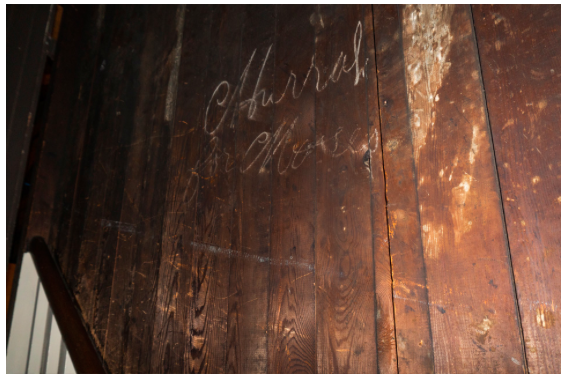Moses and Pavilion I
by Lauren Massari, Julia Munro
There are several individuals of the name Moses mentioned in the early accounts of the university. Currently, there are five Moses individuals listed in the JUEL list of African American individuals (although it is not certain if these are five separate individuals or not): Moses (P47096), 1824-6; Moses (P47176), 1825; Moses (P47558), 1825-6; Moses (P47171), 1827; Moses (P44633), 1841.
Oftentimes, with no last names given or used, as well as any other identifying informaiton, it is difficulty to determine which Moses is being referred to in the different accounts. Further complicating the ability to ascertain the identities of indviduals is that the names of slaves could be given, and changed, by their masters.
Despite the instability of these markers of identity, and thus our uncertainty about knowing whether a Moses mentioned in one account from a particular time period is the same or different person, we can know with certainty due to these written documents that at that point in time, an individual of that name was recorded to have been and done something of note.
When that record is written by the hand of the enslaved individual him or herself, it is especially rare and significant - such as the Pavilion I (PL8438) inscription, "Hurrah for Moses."
Moses was an enslaved worker employed at UVA in 1824, 1825, and 1826. Each year, his labor earned his owner, Charles Poindexter (P47090), 50 to 60 dollars.
According to JUEL records, in addition to Moses (P47096) Charles Poindexter also owned / oversaw Ben (P47095), Prince (P47098), Reubin (P47097), Stephen (P47099), Wyatt (P47100), and "negro" anon0020 (P47163).
While Moses' exact role in constructing UVA remains unknown, it is possible that this same Moses was employed again in 1832 as a carpenter to build an attic staircase in Pavilion I (PL8438), which remarkably still bears the chalk inscription, “Hurrah for Moses.” The phrase is written on a wood wall in the stairwell leading from the second floor to the attic level. Below is a photo of the actual wood wall and the phrase, which was written in chalk or a chalk-like substance (likely not paint, and not scratched into the wood):

Additional Sources:
- "Thomas Jefferson Architect: Palladian Models, Democratic Principles, and the Conflict of Ideals"
- Photograph of the Pavilion I inscription
- Video animation by Lauren Massari (July 2020)
- "The Telltale Hand," Marc J. Seller, 1 October 2002 (accessed 15 July 2020)